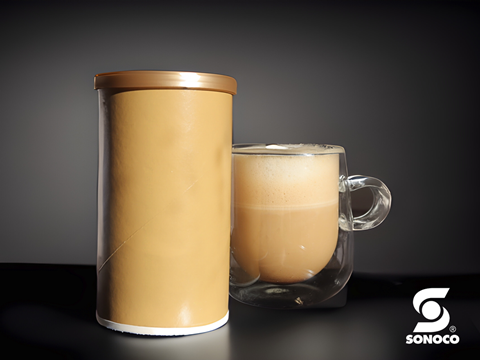
Sonoco is targeting full recyclability with a 95% paper-based can for Nestlé’s coffee products, believed to maintain the barrier properties of conventional packs while reducing their weight.
Instead of a traditional metal base, the new can features a fibre-based bottom. This is set to ensure that the can’s entire body is fully recyclable across households throughout Europe; Sonoco claims that the can meets packaging regulations in the UK and is recyclable via the country’s existing systems.
The can is also said to be lighter than conventional alternatives, meaning it is easy to handle and transport. At the same time, it reportedly maintains the same high barrier properties as the standard metal-end can.
As the latest addition to the EnviroCan Paper Bottom range, the paper-based can aims to minimize the use of plastics, boost recyclability, and help customers achieve their sustainability goals.
“We are proud to have contributed to this latest innovation in the coffee market – a new recyclable paper-end can with medium to high barrier properties,” says Sean Cairns, president Global RPC at Sonoco. “This solution reflects an important step towards more sustainable packaging.
“We hope that the success of this project will inspire other companies and brands to embrace more sustainable packaging solutions.”
Last July, Sonoco revealed a similar development in the form of a 90% paper-based Pringles can. Like the Nestlé can, it features a paper base and is designed for existing recycling streams, but it also incorporates recycled content.
The new can made its debut among Irish retailers in September; Pringles’ parent company, Kellanova Europe, intends to achieve a completely recyclable, reusable, and compostable packaging range by 2025.
Marigold Health Foods has also packaged various natural, plant-based food products – including stock cubes, sauces, and meat and fish alternatives – in a 95% paper can from Sonoco. Apparently, 60% of the paper is sourced from post-consumer recycled fibre, while the remaining 5% of the whole pack consists of an inner liner to protect the product.
If you liked this story, you might also enjoy:
The ultimate guide to the Packaging and Packaging Waste Regulation in 2024
How are the top brands progressing on packaging sustainability?
Sustainable Innovation Report 2024: Current trends and future priorities
Everything you need to know about global plastic sustainability regulation












No comments yet